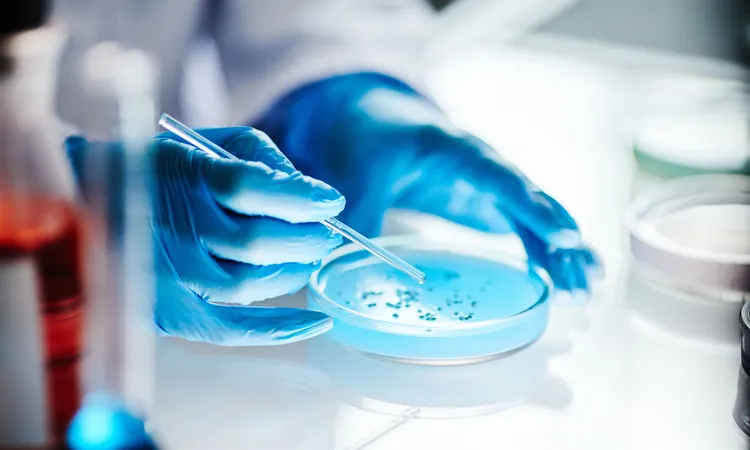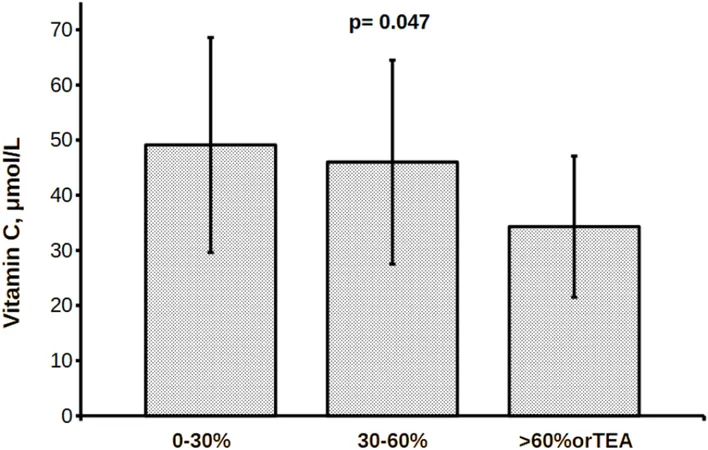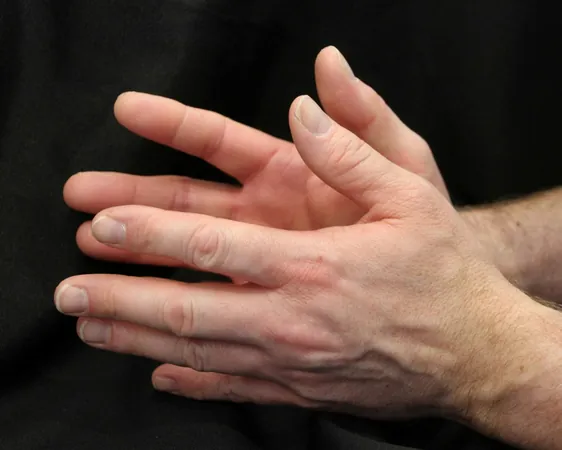
Revolutionary Heart Cells Grown in Space Could Transform Cardiac Care
2025-03-29
Author: Jia
Heart Disease: A Global Challenge
Heart disease remains a formidable health challenge globally, accounting for one in every five deaths in the United States alone. While advances in medical science provide various treatment methods—such as medications and surgeries—these often fall short of repairing the actual damage sustained by the heart. Consequently, researchers are now looking beyond Earth for groundbreaking solutions, with outer space being a frontrunner in innovative medical research.
The Challenge of Heart Regeneration
The human heart has a limited ability to regenerate itself. Once heart muscle tissue becomes injured or diseased, recovery becomes increasingly complex, especially for patients in the later stages of heart failure. For many patients, a heart transplant is the only viable option; however, the limited availability of donor hearts coupled with an ever-growing waitlist necessitates urgent alternatives that can potentially heal the heart naturally rather than replacing it.
Exploring Space for Healing Solutions
Chunhui Xu, a researcher at Emory University, embarked on an uncharted journey—examining whether the unique conditions of space could provide answers to the challenges of heart regeneration. Intrigued by previous findings that cancer cells flourish in microgravity, Xu hypothesized that heart cells might respond similarly.
Building on this premise, Xu’s lab conducted a series of experiments, beginning with simulated microgravity tests on Earth. The results were promising enough to warrant an extraordinary next step: actual heart cells were sent into orbit.
The Promise of Special Stem Cells
Xu's research focused on cardiomyocytes derived from human induced pluripotent stem cells (hiPSC-CMs). These cells can be produced in vast numbers and offer the potential to restore heart function. In animal studies, hiPSC-CMs have displayed remarkable abilities, including significant improvements in heart performance and functioning as biological pacemakers.
However, hiPSC-CMs face challenges when integrated into damaged heart tissue, often suffering from low survival rates caused by stressful conditions within the heart, such as hypoxia. As these cells are typically needed in quantities exceeding one billion per patient, ensuring their survival has become a key challenge for scientists.
Cardiac Cells Take Flight
In a groundbreaking collaboration with the ISS National Laboratory, Xu’s team launched cardiac spheroids—3D clusters of hiPSC-CMs—into space aboard the SpaceX Crew-8 mission. These cells were cultivated in microgravity for eight days, an environment that potentially enhances cell growth and resiliency.
Upon their return to Earth, the real surprise awaited scientists: the cardiac spheroids maintained normal beating activity and calcium signaling. But the most groundbreaking aspect was the molecular profiling which revealed remarkable changes in the cells’ characteristics due to spaceflight.
Space Alters Heart Cell Genetics
Comprehensive analysis of the returned cells indicated notable shifts in protein expression and gene activity. There were increases in proteins linked to stress response, cellular survival, and metabolic processes, all crucial for thriving in the challenging environment of a diseased heart. The alterations suggest that space exposure not only enhances the cells’ robustness but also prepares them for interaction with damaged heart tissue back on Earth.
A New Frontier in Cardiac Therapy
The significant changes observed align with previous research indicating that stem cells in microgravity present enhanced growth and therapeutic properties. Xu states, “The space environment provides an amazing opportunity for us to study cells in new ways,” highlighting the potential for developing improved cardiac cell therapies.
This pioneering research distinguishes itself not just through the creation of stronger heart cells but also through the introduction of a new avenue in regenerative medicine. Harnessing the benefits of spaceflight could lead to generating cardiac cells that are significantly better equipped for transplantation.
Paving the Way for Future Treatments
The implications of this work could extend far beyond traditional medical practices. With space-grown cardiac cells exhibiting improved survival rates, patients with heart conditions might one day find hope in receiving engineered cardiac tissues developed from their own cells, prepared under the unique conditions of microgravity.
Xu’s research embodies a blend of hope and innovation, inching closer to a future where damaged hearts are healed using the body’s own strengthened cells, nourished by the weightlessness of space. This research not only stands to revolutionize cardiac care but could ultimately reshape the landscape of regenerative medicine.
The promising findings of Xu's studies are documented in the prestigious journal, Biomaterials. The journey of heart cells from the cosmos to healing hearts on Earth is just beginning, but the future holds tremendous potential for improved health outcomes.




 Brasil (PT)
Brasil (PT)
 Canada (EN)
Canada (EN)
 Chile (ES)
Chile (ES)
 Česko (CS)
Česko (CS)
 대한민국 (KO)
대한민국 (KO)
 España (ES)
España (ES)
 France (FR)
France (FR)
 Hong Kong (EN)
Hong Kong (EN)
 Italia (IT)
Italia (IT)
 日本 (JA)
日本 (JA)
 Magyarország (HU)
Magyarország (HU)
 Norge (NO)
Norge (NO)
 Polska (PL)
Polska (PL)
 Schweiz (DE)
Schweiz (DE)
 Singapore (EN)
Singapore (EN)
 Sverige (SV)
Sverige (SV)
 Suomi (FI)
Suomi (FI)
 Türkiye (TR)
Türkiye (TR)
 الإمارات العربية المتحدة (AR)
الإمارات العربية المتحدة (AR)